Hothfield Common - a unique heathland environment
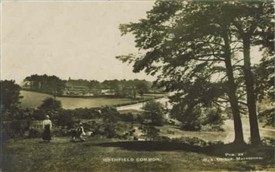
Open views across Hothfield Common around 1900
Published by GA Cooper
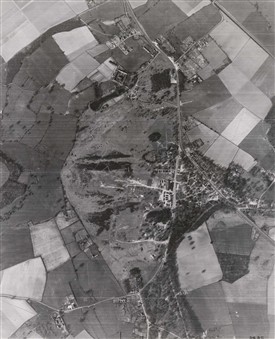
Aerial veiw of the Common in 1946 with few trees
Closer inspection reveals the hut camp and other traces of army use
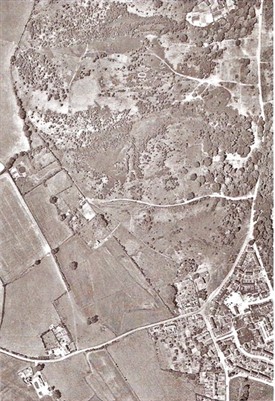
1961 aerial view of the common - the trees are encroaching
Note new village in bottom right-hand corner
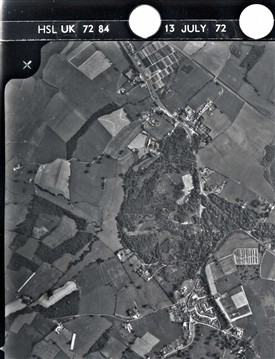
1972 and the trees have engulfed most of the bogs and heathland
All aerial photos courtesy of KCC Heritage Team
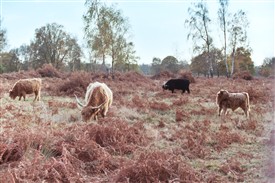
Highland cattle grazing Hothfield Heathlands
Sheila Flynn
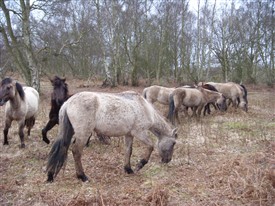
Konik ponies grazing Hothfield Heathlands
Sheila Flynn
Conservation of the bogs and heathlands
By Ian Rickards, Kent Wildlife Trust
At the heart of Hothfield Heathlands stands the old Common, an ancient heathland site. Much of Hothfield heathland reserve was once a part of the manor of Hothfield. Unproductive soils ensured it was never cultivated, but the villagers had commoners rights to graze stock and to collect firewood and peat.
1946 – During the last two World Wars, there was extensive military activity on the Common. During the Second World War there were 1200 soldiers barracked on the site, there are still signs of some of the training exercises that took place. During WWII, soldiers were barracked on the Common. Note the Nissen huts on the eastern side of the Common. You can also see lots of evidence of military training and exercise, much of which is still in evidence today.
Some of the more visible remnants include the “tank trap”, a large trench to the east of the main bog. When freshly dug, this trench would have produced a wet sandy gully, ideal it would seem, to practice driving tanks from landing craft and onto simulated beaches.
There are other training trenches still very clearly defined including a grenade range.
At this time nearly all of the Common consisted of open heathland, with the only tree cover being on the top of Butlers Toll and Foxenhill Toll.
1961 - After the war the Nissen huts were used by local families. West Ashford District Council bought the land from Lord Hothfield in 1959 for £1400, extinguishing all commoners rights, but dedicated the Common as Public Open Space. The families that were living on the Common, were relocated to the new housing built to the south of the Common.
Scrub was growing quickly, especially around the edges of the bogs and on the disturbed ground where the Nissen huts used to be.
1972 - By this time, the majority of the Common was covered by scrub, sycamore and birch. The important heathland and bog habitats were being slowly eradicated, and the species that rely on them are concentrated in one or two locations.
Today – After decades of conservation work, and re-establishment of grazing, parts of the Common are returning to open heathland. There is still considerably more tree cover than there was 50 years ago, but with continued management these rare habitats should remain safe for generations to come.
What is the use of a Heathland?
Although they tend to be used for recreation, walking and general appreciation of the countryside, in the past heathlands played an important part in the local culture and community.
Small sections of heath and peat turves were cut out and removed from the Common, and burnt as a fuel in homes. Peat burnt at a much lower temperature than wood, which you may think would be a bad thing. But before houses were built of brick, you could safely burn your turves, without burning down your house! The turves were dug in such a way, that they created shallow pits, in which the heather regrew quickly. Within seven years the turves were ready to cut again.
Birch, which is the bane of my life as a reserve manager, was very popular for all sorts of purposes. It became particularly popular following the plague, as the connection was made between dirty houses and disease. The production of besom brooms (brooms made from birch) went through the roof!
Gorse was a very popular fire wood, and was particularly popular with bakers, as it was so very flammable. It is likely that a lump of gorse in a baker’s oven would have been the spark that started the Great Fire of London.
Bog myrtle, for which Hothfield is the only place in the South East of England was used for all sorts of flavouring, but was particularly useful as an insect repellent. The Bog myrtle was also used to flavour heather beer, our country's oldest beer. Unfortunately there was often fungi associated with the heather, that went into the fermentation process and drove people “mad”.
Sphagnum mosses, which are the building blocks of the peat bogs, were often dried out for bedding, but also had an antiseptic quality and used as a battlefield dressing. There is evidence that further in the past it was used for treating piles and for making stone aged nappies!
The fluffy white seed heads of cotton grass seen across the reserve in June could be spun into useful fabrics. Bog bean roots were ground up to make a bread flour, although the toxins they hold wouldn’t do you much good.
Bracken was used for animal bedding, and the charcoal made from burning bracken was excellent for glassmaking, making particularly clear glass. However it had more sinister uses, and a woman who was found pregnant out of wedlock was sent to cut bracken as it was believed to cause miscarriage (whether that the bracken itself, or the process of waving a heavy scythe around all day isn’t clear).
Even the vigorous bramble was used, and not just for their berries. The long stems were trimmed of their spikes, and created lengths of very strong twine (useful for tying up your besom broom).
Please remember that the purpose of Hothfield Heathlands now is as a place to enjoy wildlife and the countryside. Rather than taking the plants and wildlife home with you, leave it there for everyone else to enjoy.
For further information about Hothfield Heathands and the Kent Wildlife Trust please contact us on 01622 662 012 or visit our website on www.kentwildlife.org.uk
Ian Rickards, Ashford Area Warden, Kent Wildlife Trust